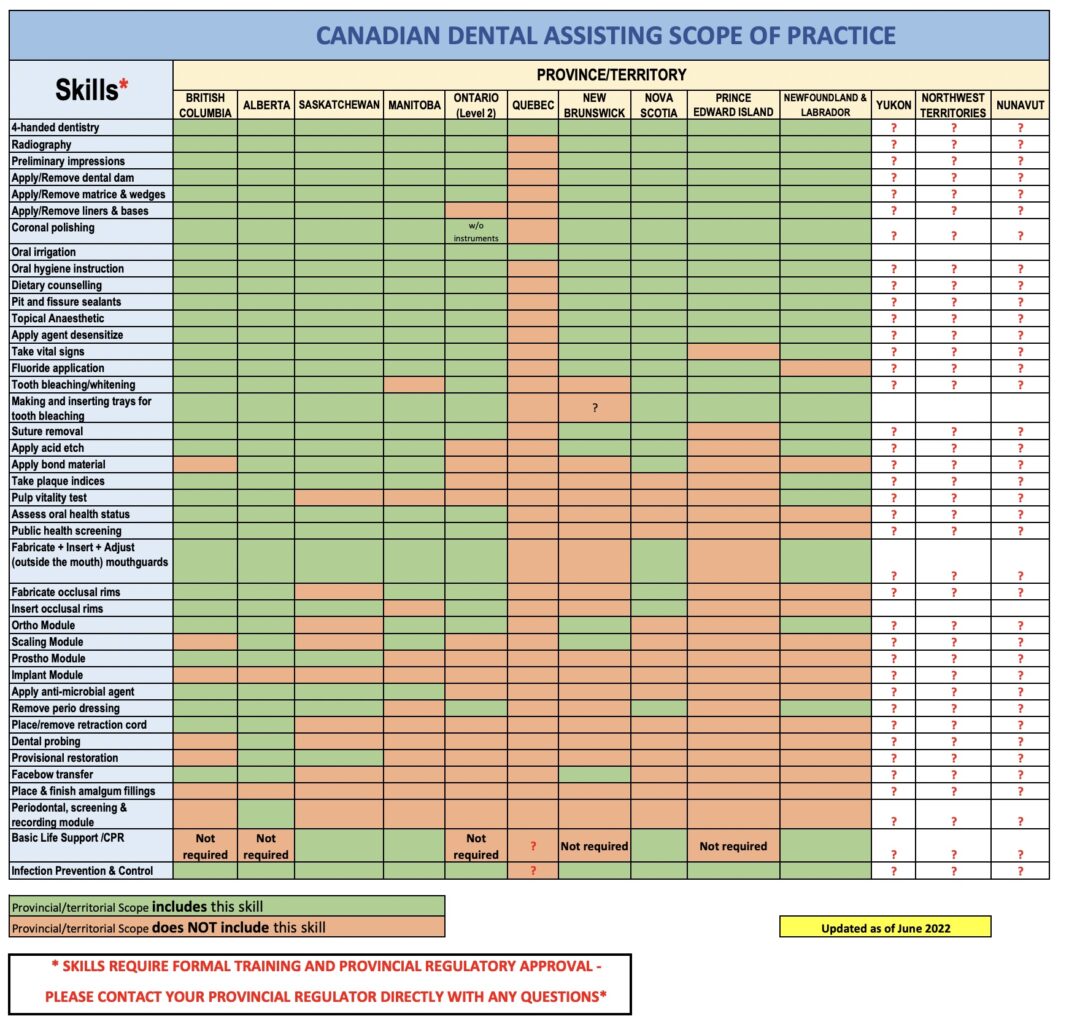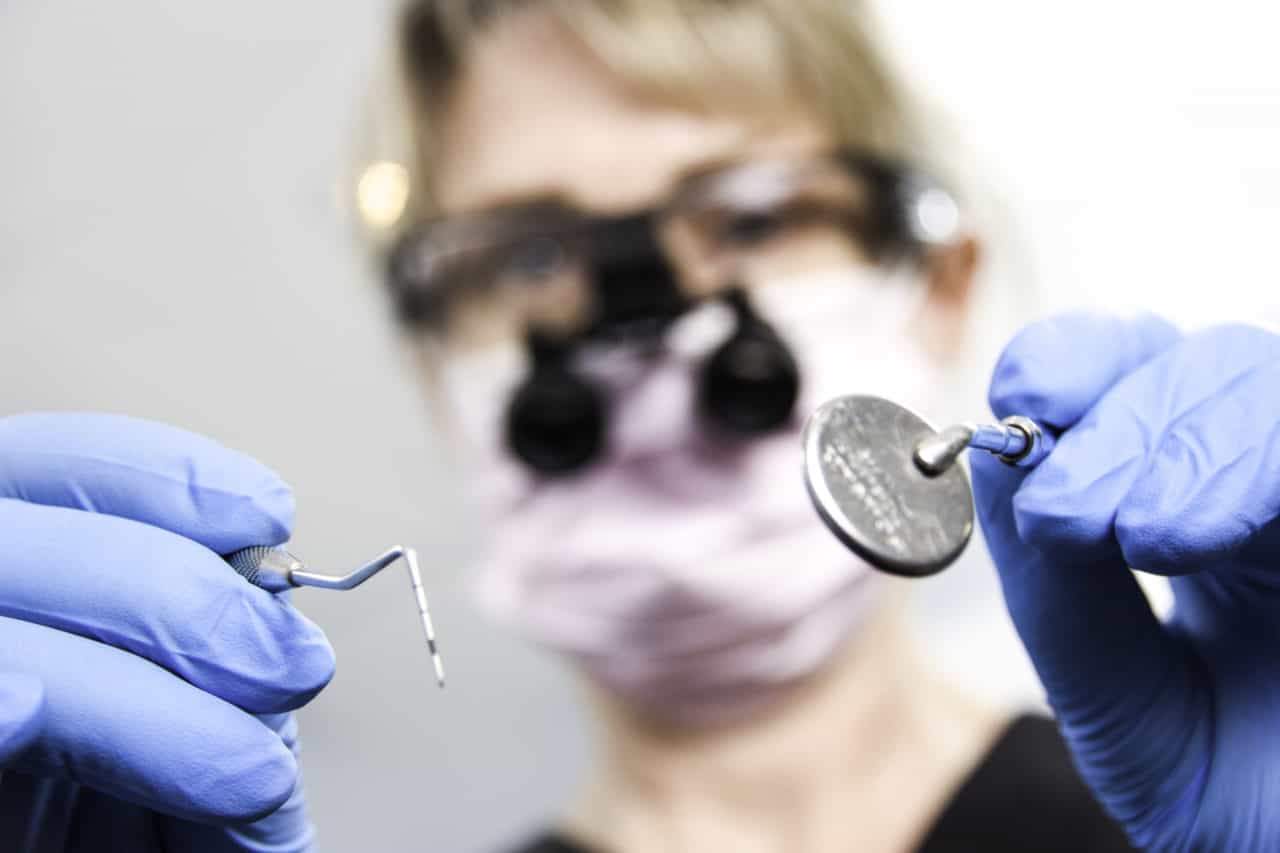
Dental assistants can often be confused with dental hygienists and vice versa because we share many roles and are both integral to the dental office; however, the scope of practice is quite different between dental assistants and dental hygienists. Dental hygienists are responsible for cleaning teeth, but can dental assistants also clean teeth?
Dental assistants’ scope of practice does not include scaling (cleaning) teeth. Further credentials can be obtained to polish teeth to remove plaque (soft deposits). In some states within the United States, the scope of practice is expanded to permit scaling calculus (tartar) above the gumline only.
In this post, I cover more in-depth why dental assistants cannot scale/clean teeth, why the scope of practice can be expanded in specific locations (limited to above the gumline only), and why it should only be done in certain circumstances.
I also cover the different scopes of practice for dental assistants in different areas/states/provinces and why the scope of practice varies between locations.
Can dental assistants clean teeth? Scope of practice explained
The scope of practice of dental assistants in Canada vs the Unites States differs due to different jurisdictions and schooling.
The scope of practice is what we are legally allowed to do within our job duties; for example, a dentist can perform a root canal, but a dental hygienist cannot.
In this post, I will only be covering the differences in the scope of practice of dental assistants between Canada and the United States.
Here in Canada, dental assistants’ scope of practice depends on schooling and the level of the dental assistant (entry level, level 1 and level 2), and below I go into detail about each level.
As I previously mentioned, dental assistants and dental hygienists may be confused with one another because we share many roles and can seem very similar to someone who is not involved in the dental industry.
Dental assistants primarily work with the dentist, can also assist dental hygienists, and have different duties in the dental office than a dental hygienist.
Cleaning teeth and scope of practice; Why it’s a controlled procedure and requires specialized training.
Putting dental instruments in the mouth is a very serious procedure that requires specialized training that is done explicitly through schooling and extensive testing and examinations.
Licenses are obtained to perform certain oral therapies and protect the public’s health and safety.
Because this specialized and extensive training does not exist within dental assisting schooling, it cannot be performed.
If scaling occurs without certain precautions or consideration of a patient’s overall health, including medical conditions and medications, serious outcomes may result.
Bacteremia can occur (bacteria enter the bloodstream) and can cause infections around artificial heart valves or joint replacements. Although rare, precautions for these things must be taken.
Also, dental hygienists spend many more years at school and being heavily tested for how to use the instruments correctly to not damage teeth and soft tissues, and make sure we can remove the calculus (tartar) thoroughly, diagnose gum disease, and provide a thorough appointment.
A dental cleaning is not just a cleaning; there is so much more that goes into it that dental assistants are not trained for. Just like dental hygienists are not trained in most of the things dental assistants do.
To learn what goes into a dental hygiene appointment that involves cleaning, I wrote an entire post outlining what we do, which is linked below.
Read Now: How Dental Hygienists Clean Teeth! What You Need to Know!
The different levels and scope of practice of dental assistants
Below are the main differences between the different levels of dental assistants here in Ontario, Canada, but include some comparisons to other provinces in Canada and states within the United States. Different levels may be called other names in different geographical areas.
Entry-level dental assistant
- It does not require certification in most locations, but in some states, a short course will be needed, and a passed examination is needed to obtain the certification.
- Minimal duties that mostly consist of administrative duties, assisting dentists or dental hygienists in common responsibilities such as passing instruments and suction, sterilization, prep for procedures in the dental operatory, helping the office flow more efficiently, and making patients feel comfortable.
- Cannot perform any tasks inside the mouth (intra-oral), take x-rays, or perform any tasks that require certification.
Level one dental assistant “chair side”
- Schools in Canada do not offer Level one dental assisting on its own, as the school programs here include both level one and level two.
- It takes about eight months to one year to become a dental assistant here in Canada, depending on the school’s curriculum and includes both level one and level two.
Level two dental assistant “intra-oral”
Level two dental assistants have a broader scope of practice and are trained to take x-rays (radiographs), perform sterilization, and do certain procedures within the mouth.
However, this is where dental assistants’ training and scope of practice stop.
Dental assistants cannot go underneath the gumline (called sub-gingival). Putting dental instruments sub-gingival requires extra licencing that both dental hygienists and dentists have.
If a dental assistant performs tasks that are not within their scope of practice, it is illegal and is often prompted by the employer to save money.
Because dental hygienists’ school is longer, the scope of practice is larger, and we have more legal responsibility (we have to have our own liability insurance), dental hygienists get paid more.
Sometimes, an employer will push the dental assistant to take on more because they are essentially cheaper labour. But this is not safe for the patients and, unfortunately, does occur. Reading through the dental assisting thread on Reddit, I read some stories where the dental assistant was looking for advice on how to handle situations where the dentist wants them to perform duties outside their scope of practice.
Here is a link to the Canadian Dental Assistants Association , which outlines the exact scope of practice of the different levels of dental assistants if you are more interested. And below is an outline from the CDAA website for each province in Canada.
, which outlines the exact scope of practice of the different levels of dental assistants if you are more interested. And below is an outline from the CDAA website for each province in Canada.
I want to point out that just because the scope of practice between dental assistants and dental hygienists is different, it doesn’t mean that one is more important than the other. We are just trained for different things.
If I had to step into the shoes of a dental assistant for a day, I would have absolutely no clue what I was doing!! I don’t know the specific details of the tools they use in order to assist the dentist, the exact steps of procedures, or how to prep for certain procedures.
I know in my practice, the dental assistants allow me to flow throughout the day. They help so much and take care of the sterilization of instruments, maintenance of sterilizers, and even assist me in doing sealants and cleaning my dental operatory.
When our team isn’t complete, for example, if a dental assistant is off sick, we drastically notice it. So if you are a dental assistant… thank you!
In some states within the United States, anyone can get hired as a dental assistant and can start polishing teeth without certification. In my opinion, I don’t think this is the best idea. I think there should be more formal training for everyone who puts anything into a patient’s mouth.
It is so hard to regulate the training that people get within the dental office vs a school that is regulated and has a formal learning and teaching plan.
American Dental Assistants Association; Dental Assisting Information by State
Linked here is a comprehensive list provided by the ADAA (American Dental Assistants Association) outlining requirements, the scope of practice, and procedures for dental assistants in each state in the United States.
is a comprehensive list provided by the ADAA (American Dental Assistants Association) outlining requirements, the scope of practice, and procedures for dental assistants in each state in the United States.
At the end of the day, it is all about patient safety, as a patient, I would want to make sure that the person doing anything inside my mouth had formal training.
Can dental assistants use scalers?
Dental assistants do not undergo training and testing to use dental scalers and, therefore, cannot legally scale below the gumline.
Suppose they have extended duties such as scaling above the gum line (only allowed in certain states). In that case, it should only be done in certain circumstances and explained to the patients that it does not replace a thorough dental hygiene appointment where the dental hygienist removes calculus and plaque from below the gum line.
Having the proper education, training, and examinations to use dental scalers is vital for the patient’s safety because, without adequate training, serious issues can arise if someone with insufficient training performs scaling (cleaning).
Dental infections can happen, and damage to the soft and hard tissues in the mouth can occur.
Why dental instrumentation below the gum is important
As a dental hygienist, I am trained to perform dental probing, which measures the space between the gum and the tooth to check the bone levels and the tissues’ health. I use this information from the probing to know how far down under the gumline I need to go to effectively clean the teeth.
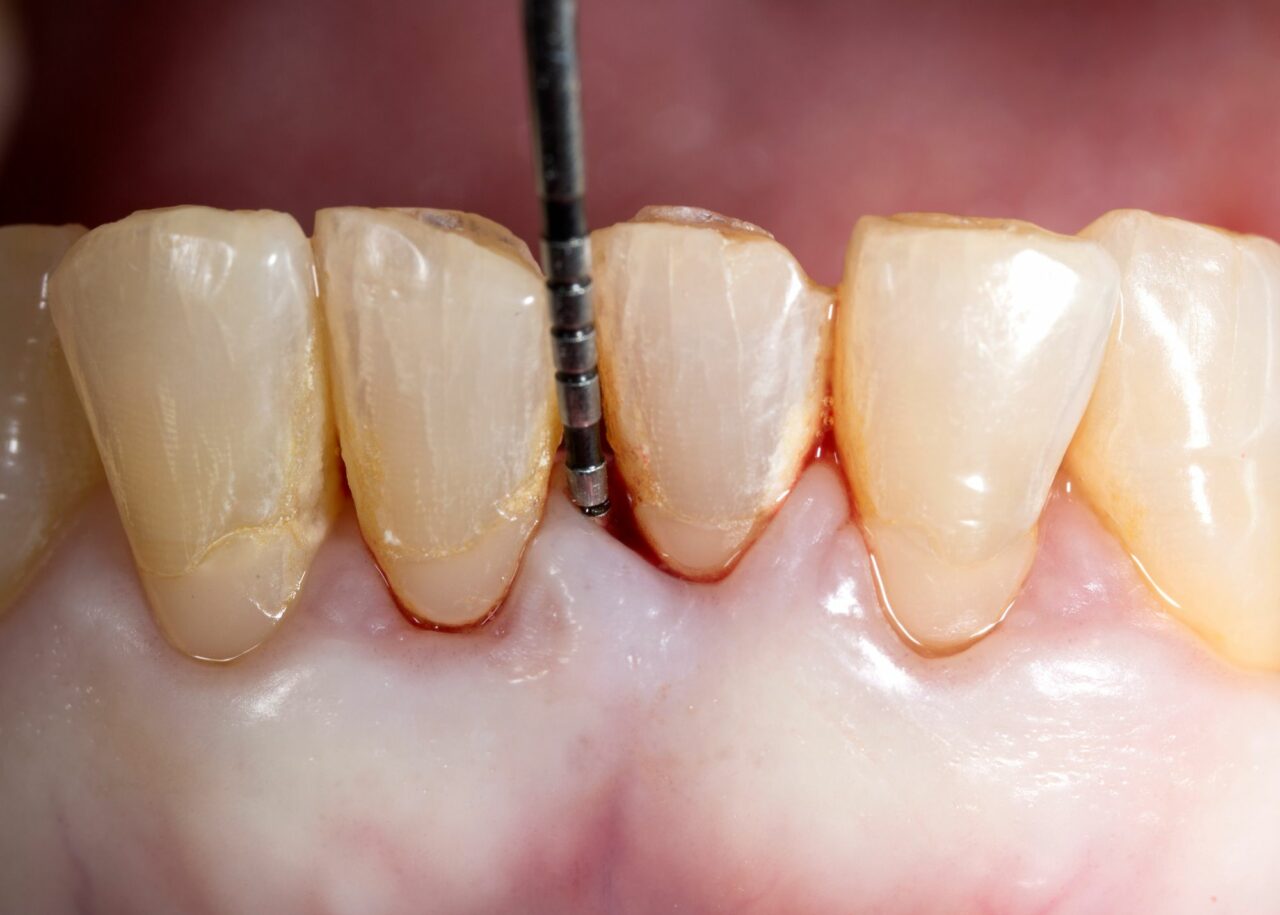
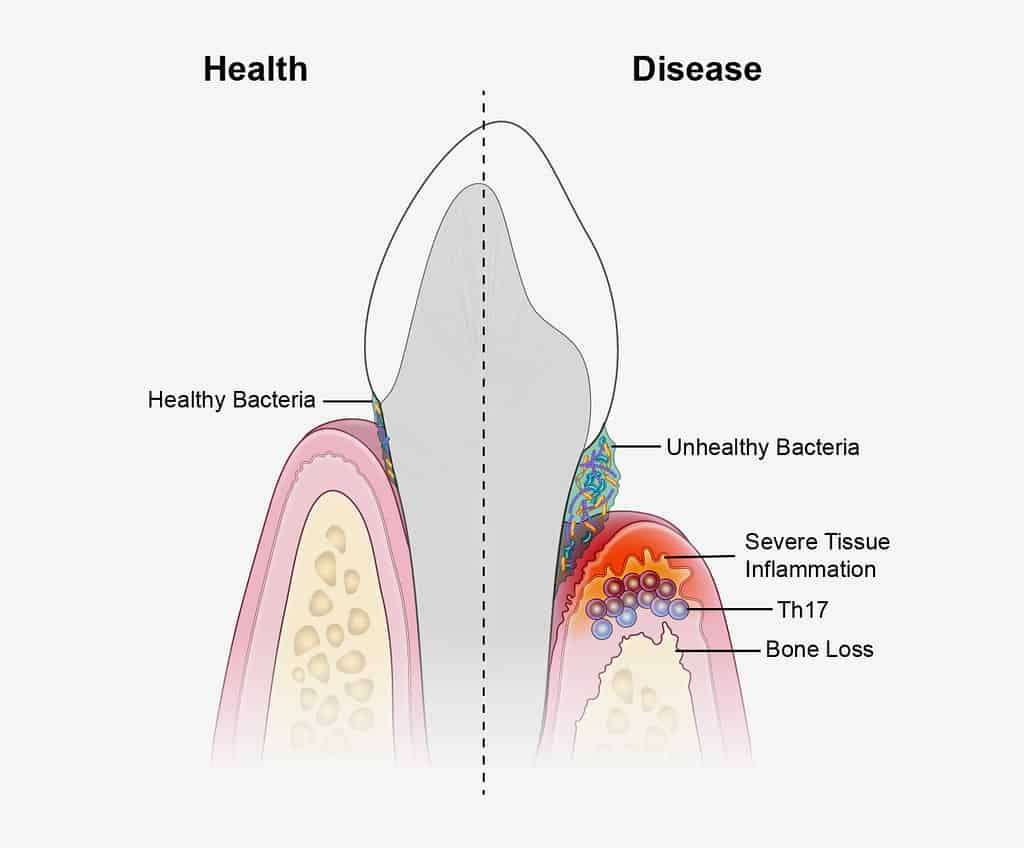
I also feel calculus (tartar) under the gumline when I probe, and I use that information to clean the teeth efficiently.
If this information is not used, then calculus can be left behind, and calculus that is left behind under the gumline can be the catalyst for a gum infection.
Also, dental hygienists are highly trained in instrumentation and all the different instruments to safely remove calculus without damaging the gum tissues, as well as the ability to visualize the complex root anatomy of the teeth to clean all the tooth surfaces.
Dental hygienists can also legally diagnose periodontal disease (gum disease), and dental assistants cannot.
Having a dental hygienist remove bacteria and calculus (dental tartar) from beneath the gum line is so important to help prevent disease and should be done regularly.
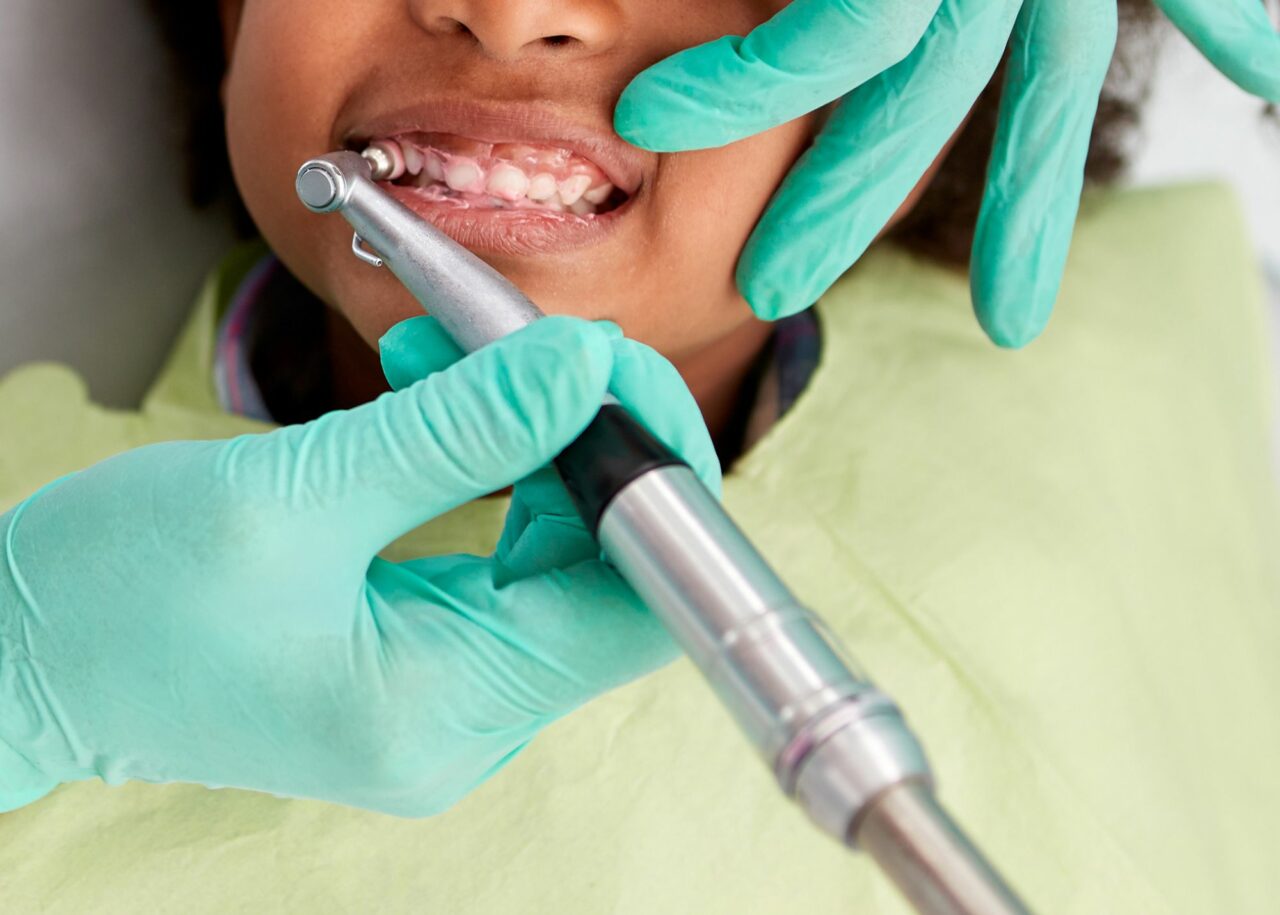
Can dental assistants polish teeth?
Dental assistants can polish teeth above the gum line with the proper credentials.
But suppose tooth polishing occurs above the gumline by a dental assistant who is allowed to.
In that case, I hope they will explain to the patient that it does not replace a hygiene appointment where the tooth surfaces above and below the gum line are cleaned, and dental calculus is removed (scaling).
But tooth polishing should not occur without scaling teeth unless there is a specific need.
Patients are often confused about what procedures are cleaning their teeth.
I often have patients tell me or ask me about the benefits of each procedure, and I happily explain the difference.
But if patients get their teeth polished, they may have a false sense of security that their teeth were just “cleaned,” and they don’t need to have their teeth cleaned again for a while.
A more thorough explanation is needed to explain to them that cleaning their teeth is so much more than that, and polishing does not remove hard deposits on the teeth, and most of the time, polishing is not even necessary.
In the linked post below, I wrote and explained why you should not get your teeth polished at the dental office regularly.
Read Now: Why You Shouldn’t Have Your Teeth Polished at the Dentist
Tooth polishing paste is highly abrasive, and when performed, a microscopic amount of tooth structure is removed. Especially if someone has the roots of their teeth polished, the roots of the teeth are much softer than the crown, and more tooth structure will be removed.
Before teeth polishing, this needs to be explained for the patient to make an informed decision about the treatments they receive.
I hope this information has been helpful to you!
Holly 🙂

